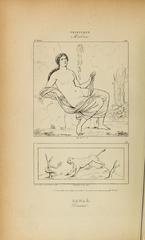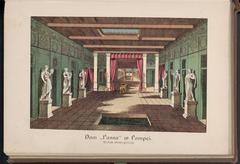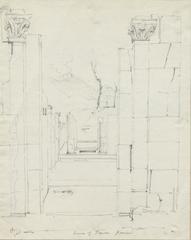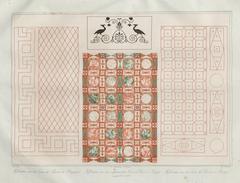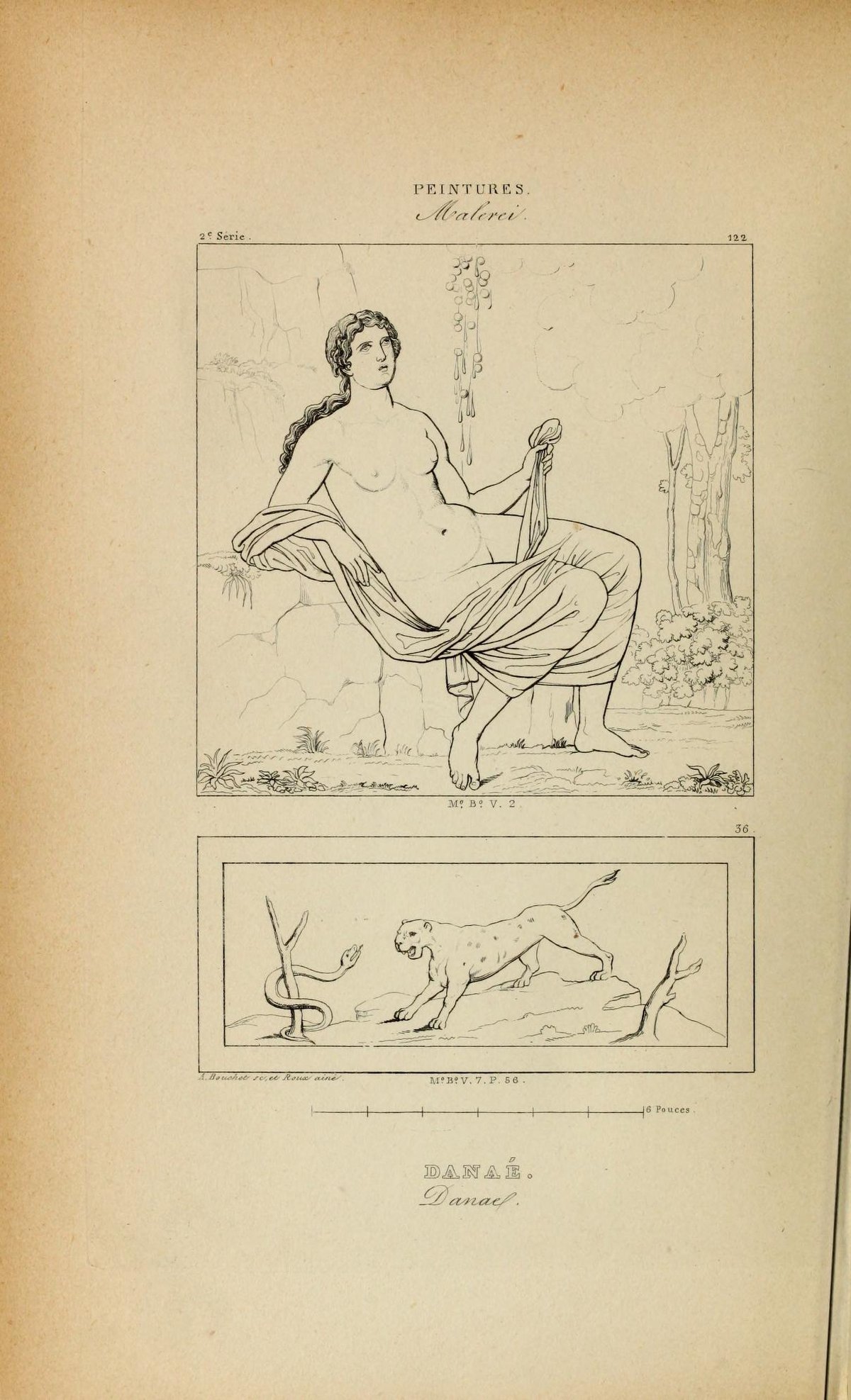
House of Pansa, Pompeii, Italy: Visiting Hours, Tickets, and Historical Guide
Date: 14/06/2025
Introduction
The House of Pansa (Casa di Pansa) is among the most illustrious archaeological treasures of ancient Pompeii, renowned for its monumental scale, sophisticated architecture, and artistic richness. Built in the late 2nd century BC, this grand Roman domus uniquely combines residential luxury with commercial vibrancy, reflecting the prosperity and social ambition of its owners, the Nigidius family from Capua. Spanning nearly 3,000 square meters and occupying a full city block (insula), the House of Pansa immerses visitors in the daily life, cultural ideals, and urban fabric of a thriving Roman metropolis before the eruption of Mount Vesuvius in 79 AD (ItalyGuides; Pompei.it).
This guide provides a detailed exploration of the House of Pansa’s history, cultural and social significance, architectural features, and practical visitor information. Whether you are a history enthusiast, art lover, or a traveler seeking an unforgettable Pompeii experience, this comprehensive resource will help you plan your visit and appreciate the enduring legacy of this remarkable site.
Table of Contents
- Introduction
- Origins and Historical Context
- Architectural Evolution and Features
- Social and Economic Significance
- Excavation History and Recent Research
- Visiting the House of Pansa: Practical Information
- Artistic Highlights of the House of Pansa
- Preservation Efforts at the House of Pansa
- Cultural, Social, and Economic Significance
- Frequently Asked Questions (FAQ)
- Conclusion
- References
Origins and Historical Context
Constructed between 140–120 BC, the House of Pansa exemplifies the economic and social ascent of elite Roman families in Pompeii. The Nigidius family, prominent merchants from Capua, owned this expansive property, which strategically fused lavish residential quarters with bustling commercial storefronts (tabernae) along the main streets (Pompei.it). The building’s evolution over time, evidenced by varied masonry techniques and filled-in doorways, mirrors the shifting fortunes and social aspirations of its owners (Virginia.edu).
Architectural Evolution and Features
Atrium
Entering through a narrow main entrance on Via della Fortuna, visitors encounter a Tuscanic-style atrium—a central hall featuring an impluvium (sunken basin) for collecting rainwater. This space functioned as both the social heart of the home and a venue for business interactions, flanked by cubicula (bedrooms) and alae (side rooms).
Peristyle
Beyond the atrium lies a spacious peristyle: a colonnaded garden courtyard with a central fishpond and flower beds. This serene, Hellenistic-inspired space provided a tranquil retreat and was surrounded by private rooms, including the triclinium (dining room) and service areas.
Decorative Art
Walls and floors of the House of Pansa are adorned with vibrant frescoes and intricate mosaics, depicting mythological scenes, geometric motifs, and everyday life. Notable is the iconic “Cave Canem” (Beware of the Dog) mosaic at the entrance, a symbol of protection and hospitality (Pompeii in Pictures).
Commercial Spaces
The house’s façade accommodates six tabernae (shops) and rental apartments, maximizing economic utility. These street-facing spaces were likely leased to merchants and craftsmen, illustrating the integration of commerce and domesticity in Roman urban design (world4.eu).
Social and Economic Significance
Owning a house of this scale signified wealth, influence, and high social standing. The House of Pansa’s dual function—luxurious residence and commercial hub—reflects the economic dynamism and social mobility characteristic of Pompeii’s elite. Inscriptions indicate that parts of the property were rented out, a testament to the thriving rental market and the strategic use of urban real estate (ItalyGuides).
Excavation History and Recent Research
Excavated between 1811 and 1814, the House of Pansa has long been central to Pompeii’s archaeological research. Modern methods—stratigraphic analysis, digital modeling, and conservation science—continue to clarify the house’s construction phases and decorative programs. Ongoing efforts focus on preserving original artworks and improving visitor experience while safeguarding the site (Evendo).
Visiting the House of Pansa: Practical Information
Visiting Hours
The House of Pansa is open to the public during Pompeii Archaeological Park’s regular hours, generally from 9:00 AM to 7:00 PM (last entry at 5:30 PM). Hours may change with the season; always verify current times on the official Pompeii Archaeological Park website.
Tickets and Admission
Admission to the House of Pansa is included with the general Pompeii Archaeological Park ticket. As of 2024, tickets cost approximately €16–€18 for adults, with reduced rates for EU citizens aged 18–25 and free entry for children under 18. Tickets can be purchased online in advance to avoid queues.
Accessibility
While the site is partially accessible, uneven ancient pavements, narrow corridors, and steps may pose challenges for visitors with mobility impairments. Consult the park’s accessibility guide or contact staff for the latest information.
Guided Tours and Audio Guides
Licensed tour operators and the Audiala mobile app offer guided and audio tours that provide in-depth historical and artistic context. Joining a guided tour is highly recommended for a richer exploration.
Travel Tips
- Visit early or late in the day to avoid crowds and midday heat.
- Wear comfortable shoes for walking on ancient stone surfaces.
- Bring water, sun protection, and a camera (flash photography and tripods may be restricted).
- Combine your visit with other highlights such as the Forum, Amphitheatre, and Villa of the Mysteries.
Artistic Highlights of the House of Pansa
Frescoes and Wall Paintings
The house features exquisite frescoes painted in vivid colors, using techniques that have preserved them for centuries (Walks of Italy). Walls are decorated with mythological scenes, floral motifs, and geometric patterns, demonstrating the owner’s wealth and taste. Painted graffiti on entrance walls offers a glimpse into informal Roman expression (Pompeii in Pictures).
Mosaics
The mosaics include the famous “Cave Canem” at the entrance and intricate designs in the atrium depicting centaurs, birds, and animals (The Collector). These artworks served not only decorative but also symbolic functions.
Artistic Themes and Social Significance
The decorative program reflects the Roman ideal of the domus as a space for both public display and private family life. Frescoes and mosaics conveyed messages of prosperity, protection, and cultural sophistication (Walks of Italy).
Preservation Efforts at the House of Pansa
Conservation and Modern Challenges
Since its excavation, the House of Pansa has faced threats from weathering, pollution, and tourism. Conservation strategies include protective roofing, advanced materials, and environmental controls to stabilize wall paintings and mosaics (Science Focus).
The Great Pompeii Project
This ambitious initiative, launched in 1997, has focused on mapping, documenting, and stabilizing key structures, including the House of Pansa, to ensure their survival (Monuments & Sights).
Technological Innovations
Digital twin technology, LiDAR scanning, and 3D modeling are employed to monitor the site’s condition and plan targeted interventions (Pompeii Archaeological Park).
Managing Tourism
With over two million annual visitors, controlling foot traffic is essential. Designated pathways, visitor caps, and restricted areas help minimize damage (Italy Sights).
Ongoing Research and Collaboration
Conservation relies on multidisciplinary teams of archaeologists, chemists, engineers, and art historians, making Pompeii a leader in heritage management (Monuments & Sights).
Visitor Guidelines for Preservation
All visitors should respect barriers, avoid touching walls or mosaics, and follow designated paths. Flash photography and tripods are typically not permitted inside sensitive areas (Pompeii Ticketing).
Cultural, Social, and Economic Significance
The House of Pansa is a vivid embodiment of Roman domestic ideals, symbolizing the convergence of status, family, and enterprise. Its architectural layout—centered on the atrium and peristyle—mirrored societal hierarchies and gender roles. Banquet rooms and shrines reflected the importance of hospitality, religion, and family lineage. The commercial spaces and rental units illustrate the integration of economic activity within elite homes (Britannica; Academia.edu).
In the modern era, tourism surrounding the House of Pansa sustains local businesses and supports ongoing preservation, while international research and visitor engagement reinforce its status as a global cultural treasure (Luxury Travel Diva; Helen on Her Holidays).
Frequently Asked Questions (FAQ)
Q: What are the House of Pansa’s visiting hours?
A: Generally 9:00 AM to 7:00 PM, with last entry at 5:30 PM. Confirm seasonal hours on the official park website.
Q: How much do tickets cost?
A: Entry is included with the Pompeii Archaeological Park ticket (€16–€18 for adults, discounts for EU youth, free for children under 18).
Q: Are guided tours available?
A: Yes, through licensed operators and the Audiala app.
Q: Is the House of Pansa accessible to visitors with disabilities?
A: Partial accessibility; some areas are challenging due to ancient flooring.
Q: Can I take photographs?
A: Yes, without flash; tripods and drones are not allowed.
Conclusion
The House of Pansa stands as a testament to the ingenuity, artistry, and social complexity of ancient Rome. Its well-preserved architecture, stunning artworks, and ongoing conservation efforts make it an essential stop for anyone exploring Pompeii. Visitors are encouraged to use official resources, guided tours, and the Audiala app to enrich their experience, and to respect preservation guidelines to help safeguard this extraordinary heritage for the future.
References
- ItalyGuides: House of Pansa
- Pompei.it: House of Pansa Excavations
- Virginia.edu: House of Pansa Architecture
- Evendo: House of Pansa Visitor Info
- world4.eu: Detailed House of Pansa Guide
- Pompeii Archaeological Park Official Site
- Walks of Italy: Pompeii Art Guide
- Pompeii in Pictures: Frescoes and Mosaics
- The Collector: Pompeii Famous Mosaics
- Monuments & Sights: Preservation Efforts
- Pompeii Archaeological Park: Preservation and Challenges
- Italy Sights: Tourism Impact on Pompeii
For additional information, consult the official Pompeii Archaeological Park resources and download the Audiala app for guided tours and interactive maps.
